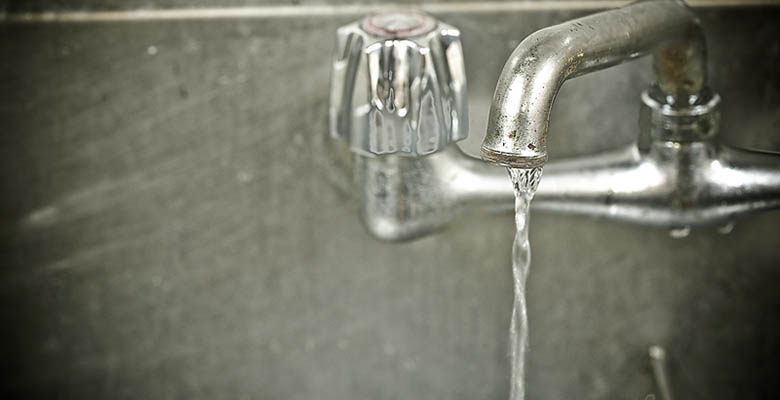Pure drinking water is a basic commodity for anyone. Water has tons of impurities present in it, which can lead to serious health issues if you don’t remove them using a water filter or water softer installation. Here is everything you need to know about removing calcium from the water.
Calcium In Water – Is It A Problem?
Calcium is one of the most important minerals needed for your body. Calcium is necessary for bone health, healthy teeth, and better metabolism. So, why is it a problem having calcium in your drinking water? Well, for starters, the calcium in water is present in the form of limescale.
It is not the form of calcium you want to consume to get your daily intake of minerals. It can, in fact, be quite dangerous to consume calcium in the form of limescale. Limescale is present in water in the form of a white cast-like substance or it can be bigger chips of insoluble calcium, which can settle at the bottom, due to gravity.
Where Does Calcium Come From?
Now that you know that the calcium present in water may not always be good for you, the next question which might arise in your mind is: How did it get in the water in the first place? Well, there might be a couple of reasons for that, but the most common one is through rocks. Water is usually found underground, in the form of huge bodies called reservoirs.
These reservoirs are surrounded by many sedimentary rocks. These rocks have calcium in them, usually in the form of calcium carbonate. This calcium carbonate can make its way into the water reservoir and when this water is pumped from the ground and supplied to various places, you can see calcium in the form of white scales or chips in the water, which can make the water hard in nature.
Why Is Hard Water Bad?
Hard water is water that has high concentrations of calcium and magnesium in it. Because of these high mineral concentrations, this water is really hard to use and isn’t suitable for drinking either. Here are some drawbacks of hard water.
It Doesn’t Produce Lather
If your tap or supply water is hard, then you might notice a couple of weird things about it. Firstly, it will not produce lather at all, even though you’re using a lot of detergent or soap. The calcium and magnesium in the hard water are what’s preventing the soft and foamy lather from being produced, which in turn, will lead to ineffective cleaning of clothes and other things.
It Can Stain Things
Calcium is present in the water in the form of white scale, but it can lead to stains that are impossible to remove. These stains can be on your clothes and even your dishes. Whenever you wash dishes or clothes with hard water, you can clearly see the deposits of calcium scales on these things and it is honestly quite annoying to deal with these scale stains.
It’s always better to not wash clothes in hard water because it will do more bad than good and you’ll be ruining your clothes for nothing.
Clogging Of Faucets And Drains
Calcium may seem pretty harmless, but in reality, it is a damaging mineral, when present in water. If you have hard water coming in your taps through pipelines, then after a while clogging can become the norm. Calcium can deposit itself on the walls of drain lines, faucets, taps, and even pipelines and can lead to severe clogging.
There is no other way to go about it than to have your pipes and fixtures replaced with new ones because calcium deposition can be hard to remove. This is why you should purify the water and remove calcium from it before having it travel through pipelines.
Ways To Remove Calcium From Water
Calcium can lead to some serious damage if you don’t remove it from water. So, here are 4 ways by which you can have calcium-free water.
Water Filter
A water filtration system Warren is a great way to get rid of impurities in the water. It also makes the water look less murky. There are special water filters that can remove calcium to some extent too. These filters have finer mesh sieves, which will stop the calcium from going into the taps and faucets. These filters can be installed right by your sink or in your bathroom.
The only drawback to using this method for calcium removal is that you will need to change out the filters regularly since the sieves can get clogged pretty quickly.
Reverse Osmosis
A reverse osmosis system is another foolproof way of removing calcium and almost any other impurity from water. RO plants work on the mechanism of passing the water through a fine semi-permeable membrane. This membrane will stop calcium and other impurities from getting mixed with the water and the result will be clean and calcium-free water.
The drawback to this method is that, firstly, it is quite an expensive installation and it works for larger volumes of water. Secondly, reverse osmosis doesn’t lead to soft water, so you will need to install a separate water softener if you want the water to be potable.
Water Softener
This is probably the best way by which you can effectively remove calcium from the water. A water softener is a salt-based ion exchanger, which works like magic. There are many varieties of water softeners available, but a salt-based water softener is not only inexpensive but it will also last you for a long time. A water softener works on the basis of the ion exchange process. The calcium ions in the water are exchanged by the sodium ions in the salt and the result is potable water, in a matter of minutes.
The only downside to this method is that salt-based water softeners can lead to the water tasting a bit salty. Softened water might have a higher level of salt concentration, so if you don’t want your water to taste salty, then you can rectify it by adding substances that will neutralize the water completely. A water softener will remove almost 99% of calcium from hard water, while reverse osmosis will remove approximately 95% of calcium.
Ultrafiltration Plant
Ultrafiltration is similar to reverse osmosis, but it is half as effective. It is a good option for people who don’t want to spend a fortune on an RO plant, but want a somewhat effective way to remove calcium from the water. An ultrafiltration plant uses a hollow membrane to remove particles as small as 0.1 microns, including calcium as well.
Although this method of calcium removal is only 50% effective in getting rid of limescale, it is still a nice option to consider, if the supply of water is slightly hard.
Conclusion
There you have it! Calcium is a common impurity found in water and this can make the water hard and difficult to use. Now you know the ways by which you can remove this impurity from the water, to make it safe for drinking. If you want to remove calcium only, you can use a water softener system Erie. However, for removing most contaminants from water, you should consider installing a reverse osmosis system in your house.





